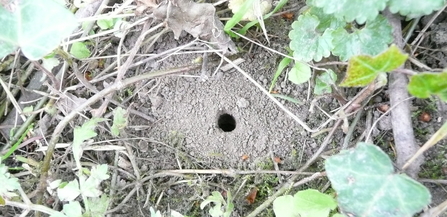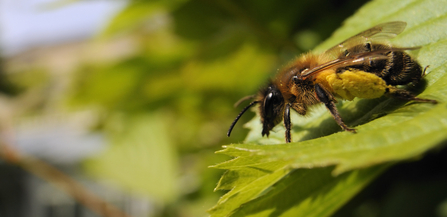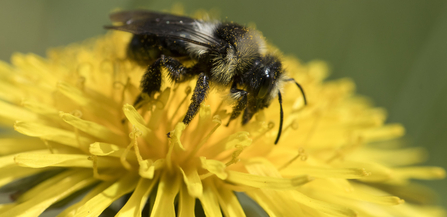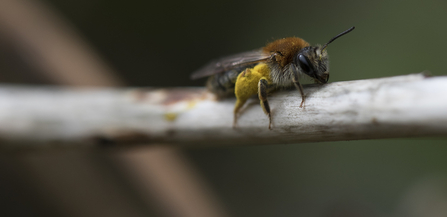Google ‘Mining Bees’ and no doubt a number of pest control companies come up. Mining bees do seem to get some bad rep, but it is misplaced, they are an important pollinator and should be a welcome guest to gardens and the farmed landscape.
Mining bees are one of four main groups of solitary bees that also include the mason bees, carpenter bees and leafcutter bees. There are around 67 species of mining bee, making it the largest bee genus in Britain. They are called solitary bees because they do not form colonies in the way that honeybees or bumblebees do, instead the females independently build a nest and collect pollen for their young to feed on. Despite being solitary in that sense, there might be many nests concentrated in a small area, giving the impression of social activity.
It is when this communal activity occurs in gardens (especially lawns!) that problems can occur. They will excavate tunnels into the ground often leaving what’s described as ‘volcano’ shaped pile of soil at the tunnel entrance that some find unacceptable. In actual fact this doesn’t harm the lawn at all, in fact it helps with aeration and drainage and these piles of soil soon disappear. The bees will otherwise busy themselves with pollinating your garden flowers and crops and importantly they will not sting you or your pets.





